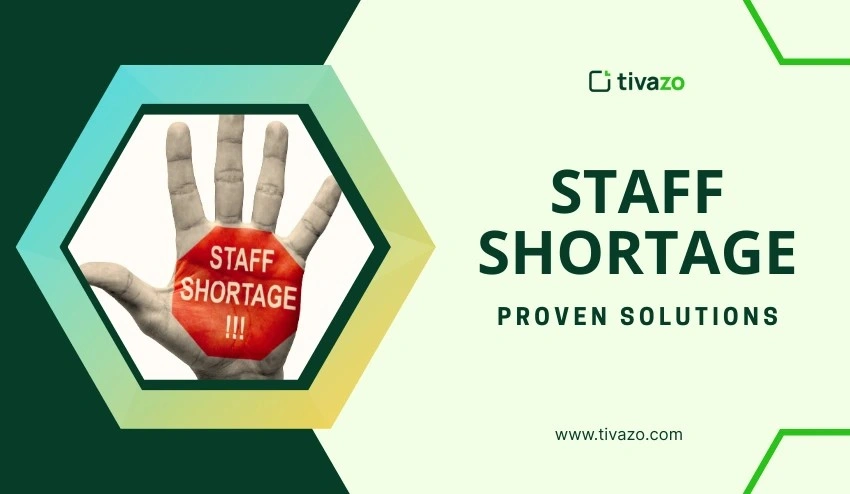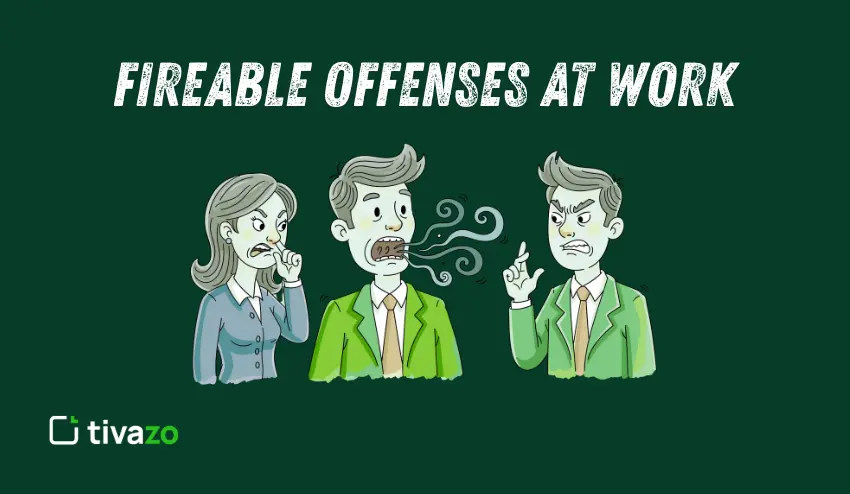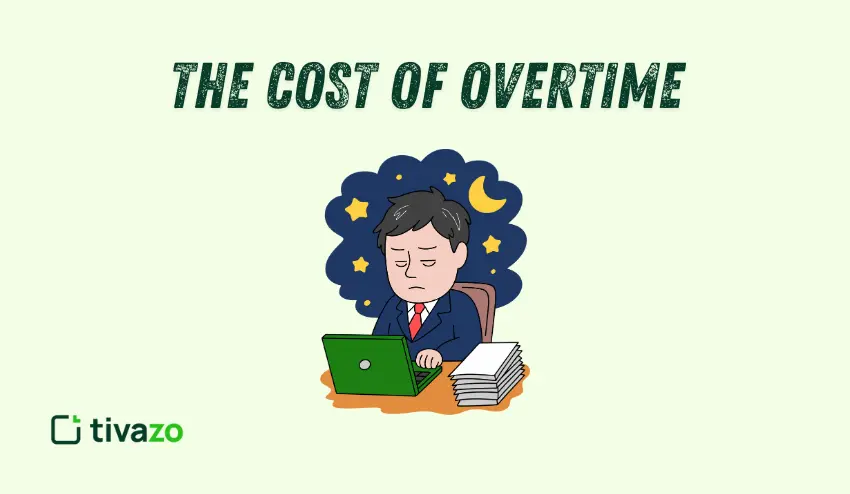Staff shortages have become an increasingly important topic that businesses can no longer afford to ignore. The workforce looks dramatically different in 2025, and companies around the world are dealing with staff shortages that most have not had to contend with to this degree. The implications of shortages reach beyond simply increasing workloads; they affect productivity, customer satisfaction, and the health of your organization. With hiring competition at an all-time high, solutions to staff shortages have become an urgent matter for companies of any size.
In this blog, we will share 5 proven approaches for addressing this crisis and turning employee morale into quality service. The steps to guaranteeing your success begin with action and a strategic approach, on an immediate basis.
Key Highlights:
- What is a Staff Shortage
- Impact of Staff Shortages
- Understanding the Staff Shortage Crisis
- Solutions to Combat Staff Shortages
- Role of Outsourcing and Temporary Staff Solutions
- Future-Proofing Against Staff Shortages
What is a Staff Shortage?
A staff shortage occurs when a business does not have adequate staffing to oversee its workload. In 2025, this issue is multifaceted with the gig economy, remote work, and technology rapidly redefining the workforce.
Today’s labor challenges stem from a tight labor market, skills gaps, and employee burnout, unlike in the past when shortages were temporary or seasonal. Industries particularly affected are healthcare, retail, and tech, where demand remains high, and talent competition is fierce.
What is the Impact of Staff Shortages?
Staff shortages can hurt more than just the number of people on duty. They tend to have ripple effects throughout an organization, such as:
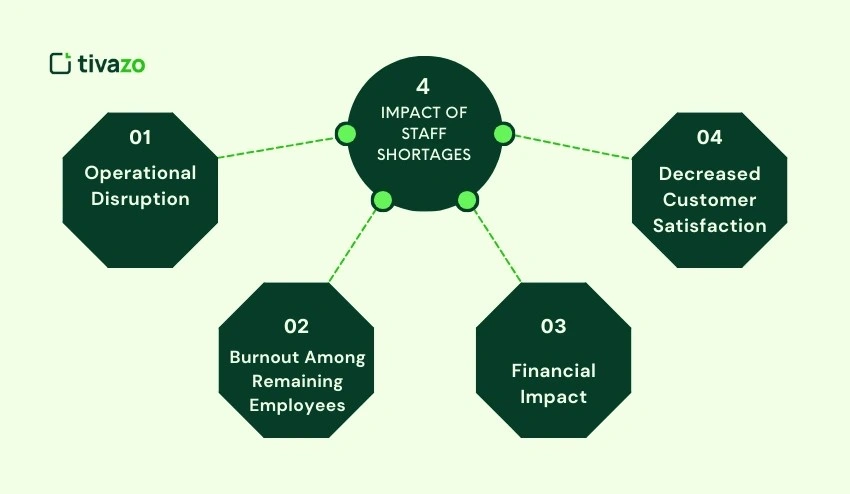
1. Operational Disruption
When there is not enough staff, the day-to-day operation starts slowing down. Tasks stack up, deadlines are missed, and work quality suffers. For some industries, like retail or customer service, delays and mistakes can severely affect customer experience.
2. Burnout Among Remaining Employees
The burden left on the remaining employees could lead them to a feeling of burnout. With the responsibility being thrust upon the few remaining employees, they will likely work longer hours, but the quality of their work will drop greatly. It is a vicious cycle of overworking and overstaffing.
3. Financial Impact
Bringing in new staff increases recruiting costs. Temporary workforce costs and training new employees into your organization not only cost time, but significant money, due to increased staffing costs.
4. Decreased Customer Satisfaction
Inadequate staff could lead to poorer service, leading to customers somewhere to wait when the work or staffing is slow, while providing lower quality products, leaving more frustrated customers. This could then lead to really denting your organization’s reputation in terms of your customers and potential customers, which could eventually affect your profit margin due to returning customers.
Understanding the Staff Shortage Crisis
Why Staff Shortages Are Happening
The staff shortage dilemma is largely due to wider societal and economic changes. When the workforce adjusted following the post-pandemic world of work, employees created new definitions of career value that oftentimes emphasized the importance of flexibility in work circumstances or as side hustles. By the same token, automation and AI technology also put pressure on the need for more specialized workers, but the talent pool is simply too small.
Impact on Businesses
Staff shortages have widespread consequences for businesses that affect everything from employee morale (resulting in burnout) to customer satisfaction, which impacts revenue generation. More recently, 45% of global businesses report that they are struggling with employee shortages, and there is no resolution in sight.
5 Proven Solutions to Combat Staff Shortages in 2025
5 Proven Solutions to Combat Staff Shortages in 2025 includes solutions to upskill and reskill your current workforce.
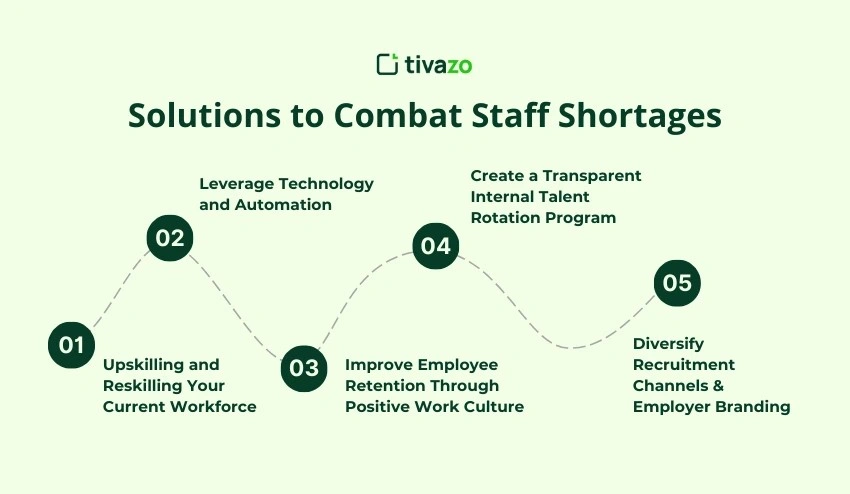
Solution 1: Upskilling and Reskilling Your Current Workforce
Instead of rushing out to hire someone new, consider upskilling and reskilling your current workforce. Doing this can be beneficial to your business in several ways as well:
- Training programs and online courses prepare our employees to confront the challenges and opportunities within their responsibilities.
- Helps close the skill gap on your team and eliminate the need to recruit outside talent.
- Engages the employee by showing them growth and development opportunities.
- Cost-effective to reskill and hire outside talent.
Solution 2: Leverage Technology and Automation
Integrating the appropriate technology can greatly reduce workload while increasing efficiency:
- AI-based products and workforce management software can automate repetitive tasks, such as scheduling, payroll, and inventory.
- Automation makes it possible for your team to spend more time on more tactical/high-level value tasks.
- Automation improves the consistency of outputs, even during times of staff shortages.
- Automation reduces errors caused by manual work, which improves overall quality.
Solution 3: Improve Employee Retention Through Positive Work Culture
A supportive work culture can go a long way in improving retention and decreasing employee turnover:
- Recognition of employees regularly boosts morale and reinforces positive behaviors.
- Providing flexible work hours allows employees to have a balance between work and personal life.
- Providing mental health support allows employees to feel comfortable and valued, improving employee engagement and reducing burnout.
- Fostering positive workplace culture results in loyalty to your organization, which leads to less attrition when staff shortages arise.
Solution 4: Create a Transparent Internal Talent Rotation Program
Allowing employees to change roles within the organization provides several benefits:
- Career development opportunities will decrease burnout.
- Employees will have opportunities to build a skill set (which will contribute to the team’s overall performance).
- Internal labor support will close staffing gaps without recruitment efforts.
- Internal movement creates a sense of ownership for employees and generates loyalty.
Solution 5: Diversify Recruitment Channels & Employer Branding
Broaden your recruitment efforts and improve your employer branding to bring in more candidates!
- Employer branding not only attracts candidates, but it also aligns candidates with your organization’s mission and values, which enhances retention in the long term.
- Use social media and niche job boards to increase your pool of applicants.
- Consider using staffing agencies to quickly fill roles, with temporary support if appropriate.
- Create strong employer branding to provide good information about your organization’s culture, values, and employee benefits.
Using Learning-Centric Approaches to Fill Gaps
A learning integrated approach is one of the strongest methods to address staff gaps in the long term. When you invest in your employee group, you not only shore up skill gaps, but you also develop a more resilient, flexible, and motivated employee group. Here’s how learning can fill gaps:
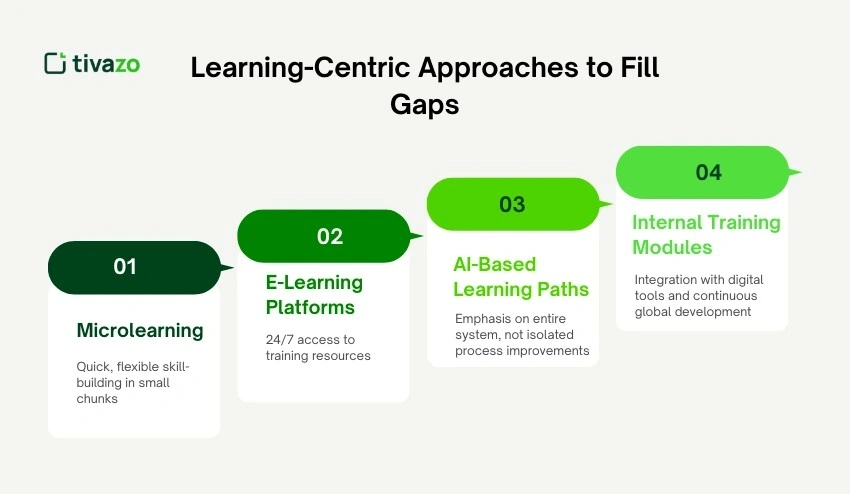
- Microlearning:
- Microlearning utilizes small bite-size learning modules that employees can access and read as they take a quick break or between tasks. It ensures that employees are keeping up-to-date on new skills and knowledge, while not being overwhelming. It is also extremely flexible, allowing workers time to catch up and learn on their own schedule, whether they are working in the office or remotely.
- E-Learning Platforms:
- E-learning platforms allow you to give your employees easy access to courses and training resources at any time. E-learning platforms enable your employees to go on developing their skills in ways that most applies to your business. E-learning can be especially important if you are using teams that are working remotely, as this means there is no need for face-to-face training. An LMS expert can ensure your platform delivers the necessary tools and processes for effective remote learning.
- AI-Based Learning Paths:
- You can offer a relevant learning experience through Artificial Intelligence that can track and monitor employees’ current skills, career aspirations, and learning tempo to recommend personalised learning paths that are appropriate to their development areas. This keeps learning relevant and of high interest, leading to higher employee engagement in their own learning experience.
- Internal Training Modules:
- You can help fill immediate skills gaps through developing your own internal learning programs without the training being outsourced to another entity. Internal training can be designed to your organisation, which ensures employees have the exact skills and knowledge you would prefer they had to do their job effectively.
The Role of Outsourcing and Temporary Staff Solutions
Outsourcing also has the added benefit of rapidly and flexibly resolving staffing shortages. An organization does not have to tolerate the time-consuming process of hiring to find help through outsourcing. It does, however, come at a cost, such as avoiding heat from a clash of cultures and environmental challenges with training temporary employees.
- Timely Access to Talent: Take advantage of staffing agency relationships or temporary contracts to find immediate access to help.
- Flexibility: fill gaps when, where and you need it, particularly when you are looking for additional help in busy times or needing short-term contracted work.
- Specialized skills: Provides you with an external skill set for the duration of the task, without continued use or commitment
Measuring Success: How to Track the Effectiveness of Your Staff Shortage Solutions
Evaluating intermittent experience derived from people you have put in place to address shortages will help make you aware if they are effective solutions. Reviewing policy outcomes will assist in critiquing what impact the strategy, whatever it may be, has had and will allow for measuring focus on areas to improve. Observing measurements such as employee engagement, productive task time, or customer service feedback will allow evaluation and improvement of your policy usage based on real observation.
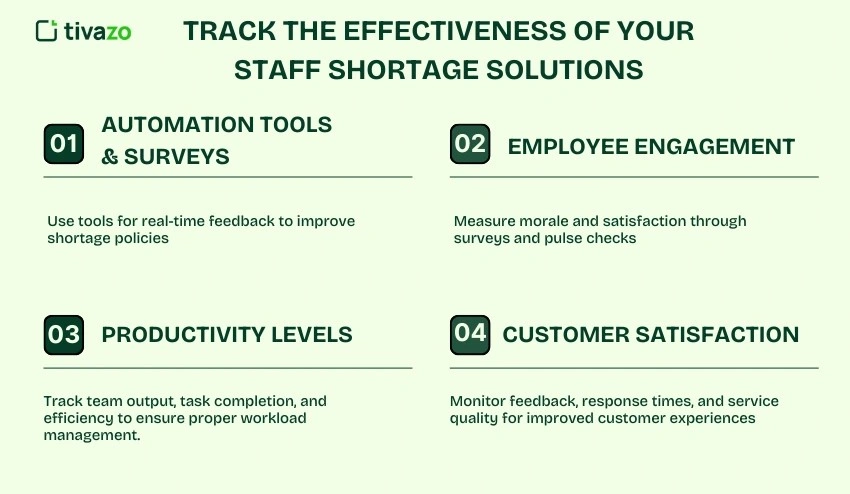
- Automation Tools & Surveys: Consider using a web tool & on line survey platform or tools that can provide real-time feedback to support improvement in shortage policies. Automating the collection of data will make it easy to adjust if needed.
- Employee Engagement: To evaluate employee morale and job satisfaction, use surveys, pulse checks, and feedback tools. Engagement is historically a strong indicator that your solutions are working and that employees feel supported.
- Productivity Levels: Track team out put, task completion times, and efficiencies. Improved productivity means that your workforce is likely not overloaded and managing workloads appropriately while outputting acceptable levels of production.
- Customer Satisfaction: Assess customer feedback, response times, and service quality. As things associated with staff shortages decrease, customer satisfaction should increase, resulting in better service with higher quality and faster response rates.
Future-Proofing Against Staff Shortages
Having a future plan to protect your workforce from having to deal with staff shortages and business continuity is important. The need to plan is that it will be risk averse but also get you to be prepared for another causing event . The type or concept of plans needed need to focus on an sustainable talent strategy that adapts to the needs of the future or the field.

- Build a Diverse Talent Pipeline:
- When you look at your recruitment efforts, assure that you look a wide range of candidate pools. Likewise this can come in many shape or varieties of approaches. It can be different age groups looking for a job, different skill sets that are looking for work, or different backgrounds that the candidates come from. A wide range of talent pipelines will provide you options to recruit a team of employees that will be able to thrive through a worker shortage.
- Invest in Scalable Recruitment Models:
- Implement recruiting plans that can scale easily to meet the business’s changing needs. Using more flexible employment models (such as contract to hire, or temporaries) or remote staffing agencies will ensure you will reliably have employees to fill any gaps in staffing when needed.
- Maintain a Flexible Workforce Strategy:
- Create flexible policies that might include remote work options or flexible staffing hours. This flexibility will not only help you attract a wider applicant pool, but will also help your general workforce suppliability change with varying demand.
When you take proactive steps to build a workforce that is able to be functional in the future, you do so ensuring your business has a plan to deal with current or future shortages or any other pressures to the organization. You will also decrease the potential for a serious staffing shortage down the road.
Optimizing Recruitment Strategies During Staff Shortages
Improve your recruitment strategies to attract the best talent in order to address staffing shortages. Creating a strong employer brand is crucial towards attracting top talent. Communicating showcases your culture, benefits, and growth opportunities. Social media opportunities, such as LinkedIn, job fairs, and niche job boards, will get exposure to potential employees. Utilizing staffing firms will always help your organization fill temporary absences quickly while maintaining productivity and reducing employee burnout.
Conclusion
Worker shortages are not something companies are able to continue to ignore. Taking proactive steps to upskill your workforce, strategize automation, and create a strong culture are important to not just surviving, but flourishing, in these tough times. Take those actions now to head off negative long-term impacts and better ensure a stronger, more sustainable future for your organization.
If you’re passionate about overcoming your staff shortage challenges, begin today with one or more of the solutions proposed in this article, and you will see your business become more efficient and better prepared for the future.
